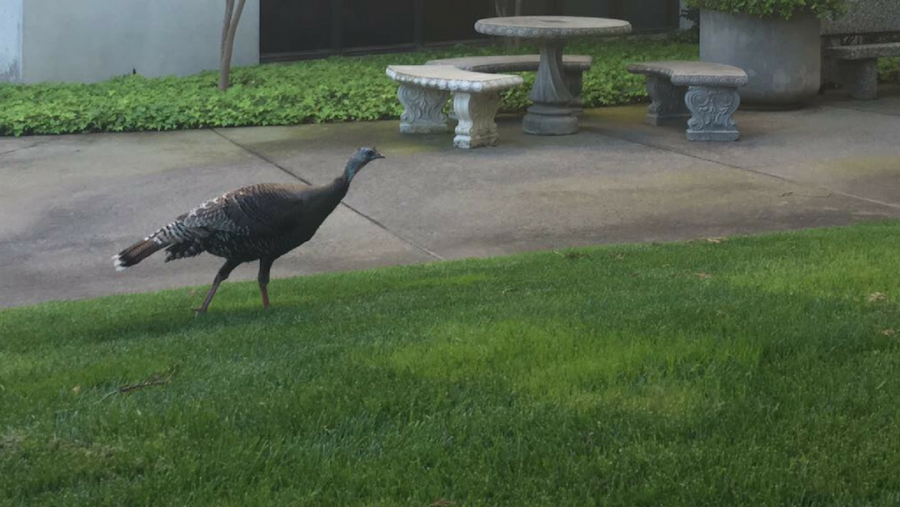Wild turkeys have been roaming around Sacramento State for a few years now, and they are not part of the “farm-to-fork” trend.
So where did they come from?
The California Department of Fish and Wildlife began releasing wild-caught turkeys — most commonly of the Rio Grande subspecies — from Texas and other Southwestern states for hunters in the 1970s, but stopped releasing the birds in 1999 following a lawsuit from the California Native Plant Society.
While the birds are no longer being released in the state, some 242,000 turkeys populate California and are still game for licensed hunters, according to the Department of Fish and Game.
Now don’t get any ideas — the turkeys still cannot be hunted on most public lands.
Even if hunting the birds on campus was legal, these Turkeys have found a home at Sac State and should be accepted by the community. Students aren’t permitted to go around shooting squirrels, so they shouldn’t be allowed to kill turkeys, even if they do taste better than rodents.
With few predators in the state, the turkeys have grown more prevalent in urban areas across Northern California and the Central Valley, and have been well-documented by Capital Public Radio, as well as Sac State students and President Robert Nelsen on Twitter. (Story continues below)
The chickens on #SacState campus have been replaced by turkeys. #StingersUp #HornetNation pic.twitter.com/ycYD5p070N
— Robert S. Nelsen (@PrezNelsen) April 1, 2016
Only at sac state would I drive by a group of turkeys pic.twitter.com/PZMpQUIeCc
— Devon Medeiros (@DevonMedeiros) February 22, 2015
OK but seriously where are all these turkeys coming from @sacstate pic.twitter.com/gEfKIvAOqt
— Barbara Harvey (@barbaraaharvey) March 25, 2017
The gobblers aren’t the first poultry to occupy Sac State. As many know, feral chickens once wandered campus freely but were removed in 2004 due to possible health concerns — shortly after former president Alexander Gonzalez arrived to the university.
This time, Sac State should leave the birds be.
Californian turkeys drew national attention in October when the Davis City Council voted 4-1 to implement a plan that would trap and relocate the birds away from urban areas. After months of destroying vegetation, defecating in public spaces and terrifying residents, the turkeys pushed the typically animal-friendly city of Davis to take action.
That said, this council vote was held following dozens of complaints of hostile turkeys walking into resident’s yards, circling people’s cars and even chasing people.
Unlike the beloved squirrels, the turkeys don’t harass students for food in the Library Quad or outside of River Front Center.
Most of the flocks around the university can be spotted on the outskirts of campus — near College Town Drive and the Facilities Services building adjacent to the athletic fields — rarely impeding students walking to class or disturbing anyone around the heart of campus.
Turkeys may not be as cute as squirrels or chickens and their babies, but that doesn’t mean they should be exiled. Beside, with thousands of turkeys living across Sacramento County, keeping the feathery toms off campus would be a challenge.
Though not particularly known for their intelligence, turkeys were once described by Benjamin Franklin as “Bird(s) of Courage.” With tuition increasing and students seemingly more politically polarized than ever, perhaps a symbol of bravery — albeit an ironic one — is what Sac State needs right now.
As long as the turkeys at Sac State do not pose any immediate threat to students, faculty, visitors or campus vegetation, why bother them?
Comment below and let us know where on campus you’ve spotted the turkeys.



























































































































Ally • Apr 17, 2017 at 7:34 pm
Tons of grammatical errors and sentence structure problems. I agree with the opinion though.